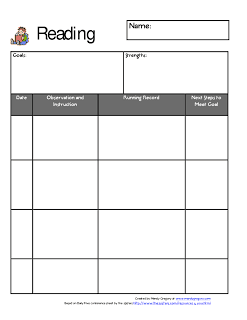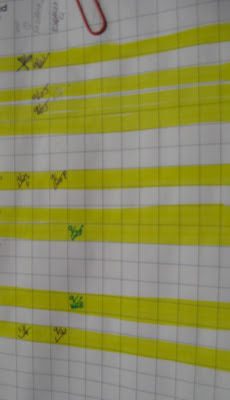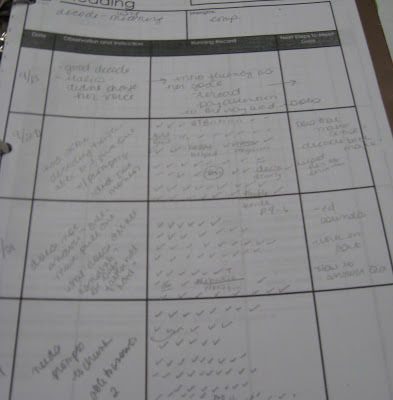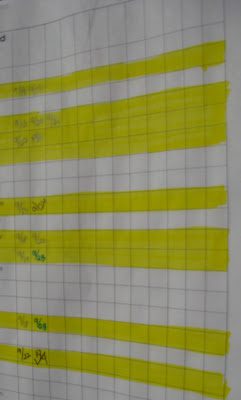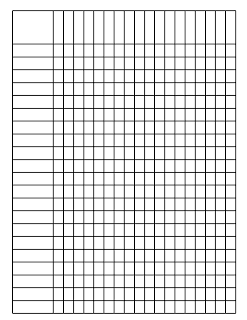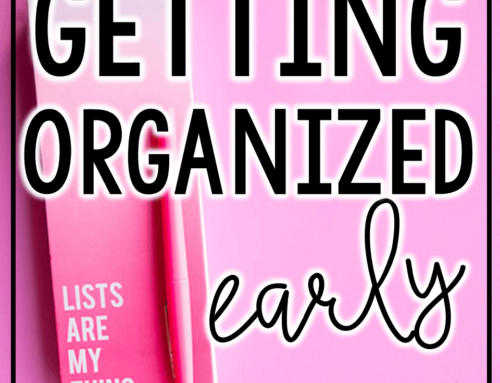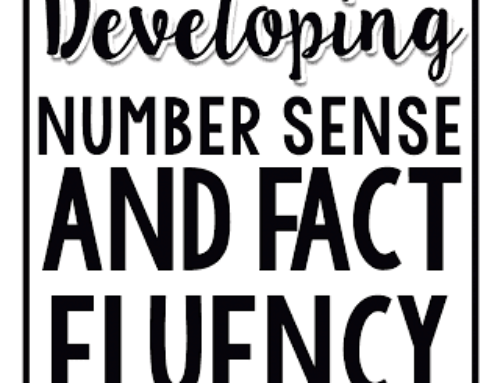Shoo-wee!!!! My fingers hurt from my last guided reading post. I don’t anticipate this one being any shorter! Apparently I am slightly long winded. Seriously, such a shocker.
I try to keep track to see if students can answer the questions correctly. This is a formative assessment for me and it helps me make sure I vary the types of questions I ask students. I write the date next to their name under the column for the question style. If they got it correct I mark over the date with a check. If it is incorrect I mark over it with an X.
Often I find this teacher tap in time is a great time for a quick conference with that student. I do a modified version of the Daily 5 and the CAFE menu. I usually discuss where they are on the menu and what they can do to help themselves with that area next time. After I listen to the student I jot down my next step to meet their needs. Here is a student’s sheet from earlier this year as an example.
The first reading block for the student says “had some decoding trouble,” “able to figure out with prompting” and “did not monitor.” The next box is a quick running record. The last box is what I will do next to support this student. I wrote “Does that make sense?” because the student needs to ask himself this constantly (that was the point of my quick conference with him) and “decode book.” The last part was a reminder to me to make some of the decodable readers from Reading A-to Z and read these with his group since he wasn’t the only one with this problem!
To make sure I am not reading with the same students each time I keep a checklist. I write the date next to the name to keep a running list. It is the same copy of the earlier checklist, just another use!
Update: If you are looking for LOTS more information about Guided Reading and organizational make sure to check out my guided reading pack, A Guide to Guided Reading. A hundred pages of guided reading goodness!
Mandy Gregory is a 2007 and 2012 Teacher of the Year. She has taught Kindergarten- 4th grades in both the general education and inclusion settings. She is currently a 1st grade Special Education teacher. She is the owner and creator of Mandy’s Tips for Teachers website (www.mandystipsforteachers.com) and has over 13 years of teaching experience. She is married with two beautiful children.

